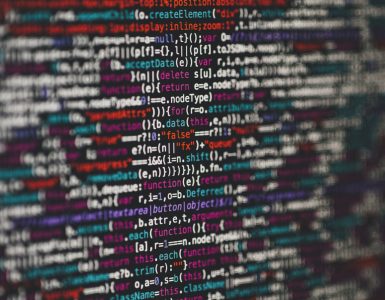The Internet of Industrial Objects (IIoT) is today one of the most popular technologies in the IT sphere. Even though, its concepts are becoming increasingly familiar and promise to help driving the next industrial revolution, we are still in the early stages of this transformation.
The majority of industrial companies have begun the deployment of IIoT projects, but only a few of them are at advanced stages. It is therefore interesting to answer the following questions: why is the development of IIoT technologies so slow, and how can companies maximize the deployment and use of these solutions?
First things first, What does IIoT mean ?
The IoT or Internet of Things commonly refers to a network of devices and sensors capable of collecting and exchanging data between them. Sensors are the elements of the system that collect this data.
Industrial IoT (IIoT), a subset of IoT, focuses on the requirements of industrial applications, such as manufacturing, oil, gas, public services…
Although IoT and IIoT share common technologies (sensors, cloud platforms, connectivity and analysis), the level of requirements and expectations for these two concepts are very different.
More and more companies are beginning to collect and store data from sensors. Once done collected, the next step is to analyze this data, and through it, seek models to improve business operations, for example, by doing more preventive maintenance or planning more efficient delivery routes.
This new strategic orientation, based on the collection and analysis of IIoT data, gives organizations visibility into areas of their operations that they have never had before.
IIoT allows all relevant data to be collected from the heart of the machines themselves, and then to be analyzed in order to detect any possible faults or improvements in the system. IIoT typically allows manufacturers to:
- Measure and reduce energy waste, which reduces operating costs and makes production more environmentally friendly.
- Reinject information from other systems and devices directly into the production line, allowing it to anticipate and make improvements in days or even hours.
- Fully or partially automate the stock replenishment process with sensor alerts that trigger orders when stock levels are low.
- Automatically identify failures or potential failures before they occur, protecting employees and minimizing production line interruptions.
IIoT’s greatest added value comes from its ability to optimize operations. But it also has the power to radically reshape every aspect of product development and delivery, from design to sale.
To go further, read our article: Mobile devices in factories: An important competitive advantage
Why the implementation of IIoT technologies is so slow?
According to the Economist Intelligence Unit’s (EIU) Internet of Things Business Index 2017, the implementation of IIoT solutions is not proceeding as quickly as expected, although the ROI results for the companies that have implemented them are very promising.
Awareness of the power of IIoT has therefore not been sufficient to move projects forward. Indeed, the managers who manage the deployments of these solutions still have many challenges to meet before they can succeed in implementing them on a large scale.
The hurdles facing companies are multi-faceted. In a study conducted earlier this year by the Internet of Things World, surveyed leaders said that the main challenges they face in implementing IIoT projects include:
- The dealing with equipment and software that are technologically outdated but still in use (53%). Indeed, the cost of replacing them can be a dissuasive factor, while the systems in place are still working.
- The need to benefit from specialized and customized solutions (46%). To be effective, each solution must be able to adapt to the plant or service. There is as much IIoT application as there are structures and plants.
- Security and the company’s ability to protect data (37%). The involvement and ongoing training of IT departments is essential to maintain system and data security.
- Project management: define which services will be in charge of the IIoT integration (38%). Determining who will be in charge of implementing IIoT from the start can be a complicated step for organizations but it’s crucial for the success of the project.
Even if the IIoT ecosystem can be vast and difficult to master, it is essential to initiate such projects to gain competitivity and not to exclude oneself from digital transformation. Companies that start implementing IIoT solutions today are preparing for tomorrow’s successes.
How to succeed the implementation of IIoT technologies?
Once the right infrastructure is in place, and this is where the challenge lies, the possible applications of IIoT are almost infinite.
To successfully deploy IIoT, here are a few things an organization should focus on :
- Software and device management: IIoT means piloting hundreds or even thousands of connected objects. To succeed, it is necessary to know how to anticipate the management of these objects: replacement, renewal, update…
- Complex integration: Solutions often focus too much on pure technology at the expense of usage. The IIoT leads to a transformation that has impacts on internal and external processes, it is necessary to anticipate all uses before the implementation of solutions so that they best suit the needs.
- Security: To develop secure solutions, manufacturers will have to ensure the security not only of their equipment but also of their transmissions, data, cloud, infrastructures and applications.
- Strategic organization: It is important to define the company’s strategy and priorities regarding IIoT. Its implementation must therefore be part of a digital roadmap and be effectively linked to the priorities set.
To begin to realize the full potential of IIoT, manufacturers will therefore need solid strategies, in-depth expertise in the field, as well as advanced and adapted technologies. It is also essential to have a global strategy in the company as, in the context of the development of the IIoT, many departments will be concerned.






